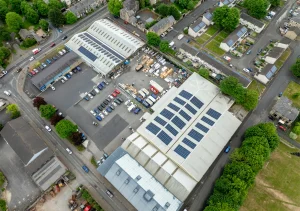In the 21st century, excessive food purchasing has become somewhat of a habit for many. Whilst it’s nice to have a fully stocked pantry and fridge, many of us end up purchasing way more than we can actually consume before the food goes bad. Around 14% of all food produced globally is lost to food waste. By simply changing some of our habits, we can take steps to reduce waste.
When looking to save money during the cost of living crisis, it’s not just your energy bills you can cut costs on, but your food bills too. By over-purchasing food, you are needlessly spending money.
Read our tips on how you can reduce food waste and save money during the cost of living crisis.
How to Reduce Food Waste During a Cost of Living Crisis
Writing a Shopping List
With supermarkets now offering more food options than you could ever imagine, it’s easy to get drawn into the latest offers and loyalty cards. To stop unplanned purchases, it’s a good idea to craft a shopping list prior to your weekly shopping trip.
Before you leave your home to go shopping, review the items in your pantry and plan ahead for the week. If you’re aware of what foods you’re going to be eating each week, it makes it easier to plan your meals accordingly.
Understanding the use by and best-before dates on food packaging is also very important when it comes to cutting food waste. While best-before dates concern food quality, use-by dates refer to the actual safety of the food. Ensure that you check labels when purchasing food so you’re aware of the timeline you have to consume the product and keep this in mind when planning your meals.
Meal Planning and Batch Cooking
Meal planning and prepping are great ways to save on food waste. By planning your meals ahead, you can ensure that you are using all products bought on your weekly trip to the grocery store.
When you’re planning your meals, choose recipes that you know you would love to eat for the week ahead. Batch cook these recipes and store them in containers in your fridge or freezer. Batch cooking takes the effort out of cooking, with your meals ready to eat when you return home after a long day at work.
Meal prepping can also prevent the urge to pick up your mobile phone and order takeaway food. This guilty pleasure can end up putting a large dent in your monthly budget. We typically order takeaways when we are feeling too lazy to cook, so having meals ready to go greatly reduces this impulse.
How Can Freezing Food Help With Food Waste?
If you find it easier to meal prep for just a few meals a week, batch cooking is still on the cards for you. Split the food into equal portion sizes and keep the food fresh for a later date by freezing. You could even batch-cook for a few weeks in advance and freeze this for later use.
Reduce your need to use your kitchen appliances regularly for long periods of time by freezing your food for future use. This could actually have energy-saving benefits, helping you save on your monthly bill.
Fruit and vegetables are particularly great options to freeze. Fresh produce is typically cheaper to buy in bulk, yet one of the first things to go bad. Freeze chopped vegetables like carrots and parsnips and onions to make them easy to use the next time you’re cooking a meal. Blending frozen fruits such as berries, mango and bananas with water or milk is the perfect way to make ice-cold smoothies.
Get Creative With Your Leftovers.
Whether cooking for just yourself or a large family, there’s always the chance that you may have leftover food after a meal. Rather than throwing these leftovers in the bin, get creative and use them to make a brand-new meal for lunch tomorrow. Leftover lunches don’t have to be boring, if you think outside of the box you can use them to create a brand-new meal.
Do you have leftover Chilli Con Carne? If you have some pasta, your leftovers could become a chilli-based pasta bake, or if you have wraps available, perhaps try a burrito. When getting creative with leftovers, the world is your oyster!
Buy ‘Ugly Food’ Boxes
Grocery stores are now avoiding food waste through ‘ugly foods.’ These are typically fruits and vegetables that are perhaps slightly misshapen or different sizes that would usually be thrown away and not sold – even though they are still fine to eat.
A bag of ‘ugly’ vegetables is usually a fraction of the price of a normal bag and tastes almost, if not completely identical. Opting for this option is a great way to help play your part when shopping for food or veg in-store.
If you fancy a takeaway, mobile apps such as ‘Too Good To Go’ help you save money on whilst helping restaurants waste less food. ‘Too Good To Go’ allows restaurants and shops to sell that hasn’t been purchased by customers throughout the day. Though this is perfectly good food, which would otherwise be wasted. The food sold on the app is a lot cheaper than the regular price, so you can get some great deals for your money.
Live More Sustainably
Not only is food waste bad for your finances, but it’s also bad for the environment.
As a result of excess food waste, greenhouse gases produced by the food industry rise each year. In the production of food, each step of the journey uses energy or water.
When food is wasted, we are not just wasting the physical product, but the resources that have gone into making them. Overall this means that food waste generates up to 8% of all greenhouse gas emissions globally.
If you are interested in how you can do more for the environment, see our handy guide to living a more sustainable lifestyle.







